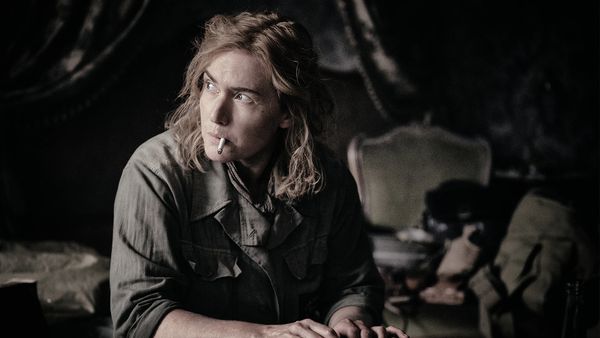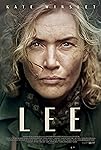Eye For Film >> Movies >> Lee (2023) Film Review
Lee
Reviewed by: Richard Mowe

It’s easy to discern why the story of Lee Miller, one time fashion model turned one of the few female photographers during the Second World War would appeal to Kate Winslet, who is also credited as a producer.
Miller's professional life was as varied and colourful as her private existence which included a relationship with the Surrealist painter Man Ray and then her affair and marriage to the British Surrealist Roland Penrose with whom she lived in England for most of her life. She was also a woman pioneering her way in a man’s world and whose passion for her craft carried her forward.

Director Ellen Kuras and the team writers focus here Miller’s recording of the Blitz, the liberation of Paris and the arrival of the Allied forces at the Buchenwald and Dachau concentration camps often in the company of fellow war photographer David Scherman (Andy Samberg), who worked for Time magazine. There are also cameos from the likes of Marion Cotillard and Noémie Merlant as two French friends and a more developed role for Andrea Riseborough as Audrey Withers, Miller's editor on Vogue magazine.
The structure of the film, and the muted work of cinematographer Pawel Edelma, somewhat constricts it to the framework of a conventional biopic, told in a series of flashbacks around a conversation between Lee in her later years in the Seventies and a young journalist (Josh O’Connor) who wants to find out first-hand about her work and the trials and tribulations she endured. The material is based on her son Antony Penrose’s book The Lives Of Lee Miller.
Lee is first glimpsed in 1938 France when the looming presence of Hitler’s Third Reich had yet to make its presence felt on the relatively carefree lives of Lee and her Parisian friends. It was all about to change … and Lee moves to London with Penrose and starts her career with Vogue assigned to pictorial essays of the war on the home front before eventually convincing the powers that be to allow her to go closer to the action in France.
Her friendship with Scherman in which they help each other to capture some of the most indelible and enduring images of the conflict, has the ring of authenticity and provides the film with the narrative drive lacking in its early stages.
Winslet performance holds a powerful sway, embracing Lee’s abrasive and conflicted personality and viewing the horrors with an analytical eye and a sense of bravado as well as despair. Her no holds barred attitude to photographic opportunities emerges in the scene where she “stages” a photograph of herself bathing in Hitler’s private bathroom, done both knowingly and mischievously.
There are many narrative threads, however, that remain frustratingly under-nourished including her relationship with her son, yet Winslet’s transformation provides a remarkable portrait of a woman caught up in the unspeakable horrors of history that would continue to haunt her for the rest of her life.
Reviewed on: 13 Sep 2024

















